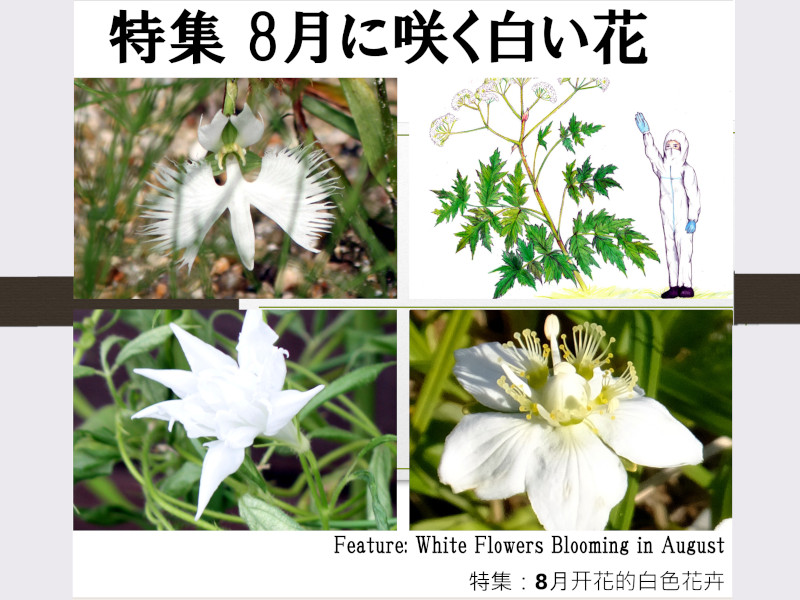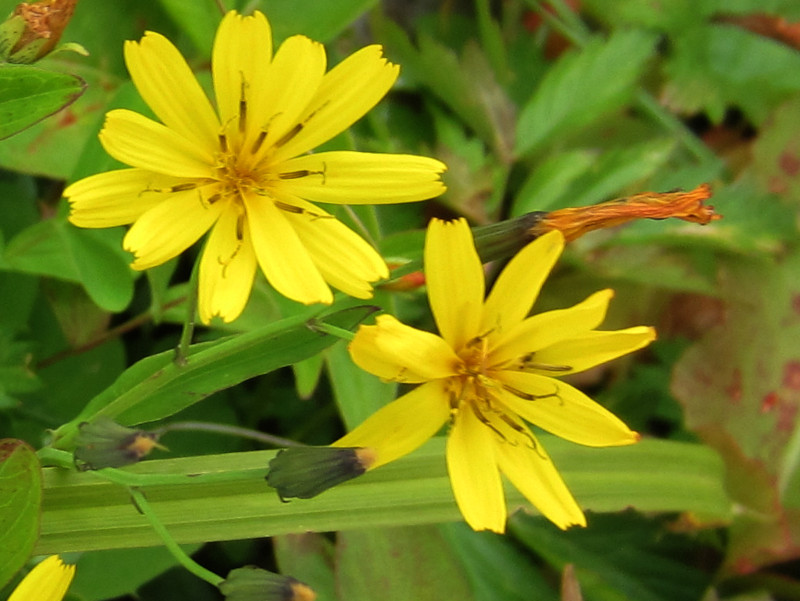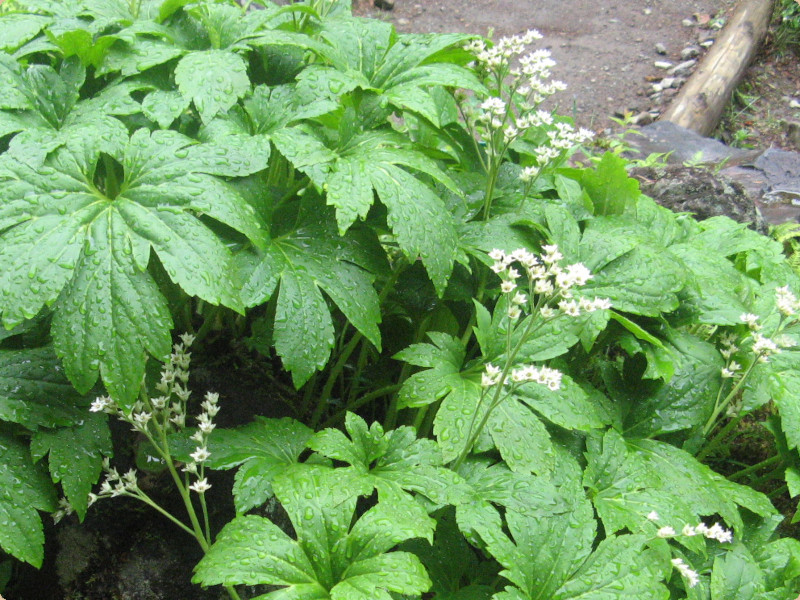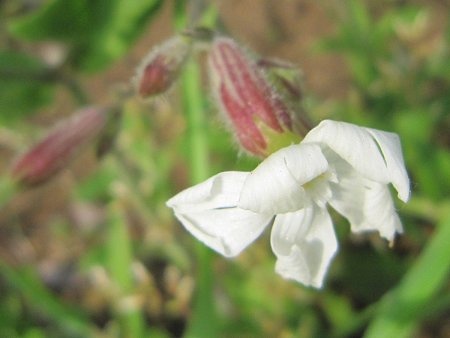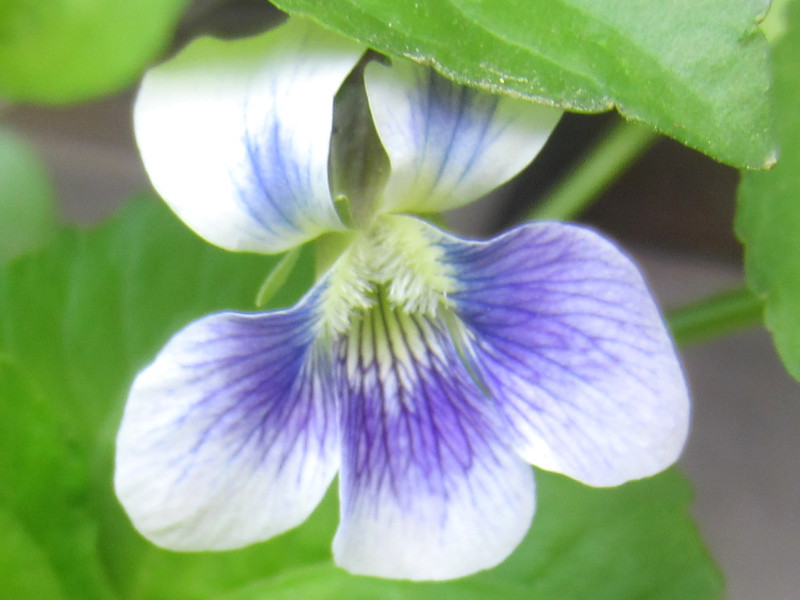Giant Hogweed
- Flower nameGiant Hogweed
- Scientific nameHeracleum mantegazzianum
- AliasGiant Hogweed, バイカルハナウド, mantegazzianum, マンテガジアナム, Baikal Hogweed, Cartwheel-Flower
- Place of originCaucasus Mountains in Western Asia
- Place of floweringSpecific area
- Flowering seasonMay, June, July, August
What is Giant Hogweed
The Most Dangerous Plant: Giant Hogweed, a White Flower of the Apiaceae Family
When removing, wearing protective clothing and goggles is necessary.
Giant Hogweed (scientific name: Heracleum mantegazzianum) is a large herbaceous perennial/biennial plant of the Apiaceae family, native to the Caucasus Mountains in Western Asia. It is also known as Baikal Hogweed or by its specific epithet, mantegazzianum.
Introduced as an ornamental plant, it spread to Western Europe in the late 19th century and to the United States in the early 20th century, but it has not been officially introduced to Japan. The plant can grow up to 5 meters tall, with hollow stems up to 10 cm in diameter. The stems branch at the top, each bearing an umbel of flowers. The compound leaves can reach up to 170 cm, with serrated edges.
The flowers are biennial, blooming only once in a lifetime in the second year, from May to July. The inflorescences are 75-100 cm in diameter, with 50-100 umbellules. The fruit is a flat oval shape, and the plant produces 20,000 to 100,000 seeds before it dies.
Toxicity
The sap of the entire plant (roots, stems, leaves, flowers, seeds) contains furanocoumarins, organic compounds that cause phytophotodermatitis. Contact with the sap followed by exposure to sunlight can cause burns, blindness, and severe allergic reactions within 15 minutes.
Name Origin
"Giant Hogweed" comes from "Giant" (large), "hog" (to eat voraciously), and "weed" (wild plant). The specific epithet "mantegazzianum" honors Italian anthropologist Paolo Mantegazza. The genus name "Heracleum" refers to the plant's strength, likened to Hercules.
Relatives of the Genus Heracleum
Heracleum sphondylium var. nipponicum (Japanese name: Hanaudo) – Blooms from late spring to early summer, with larger peripheral flowers.
Heracleum lanatum (Japanese name: Oohanaudo) – Larger than Hanaudo, with a height of 1-2 meters.
Heracleum mantegazzianum (Giant Hogweed) – Reaches a height of 5 meters, and its sap causes severe photosensitivity reactions when in contact with the skin.
Common Name: Giant Hogweed
Scientific Name: Heracleum mantegazzianum
Classification: Kingdom Plantae, Angiosperms, Eudicots, Order Apiales, Family Apiaceae, Genus Heracleum
Other Names: Baikal Hogweed, Mantegazzianum, Cartwheel-Flower
Origin: Caucasus Mountains (Western Asia)
Life Form: Perennial plant
Height: 3-5 meters
Root Diameter: 30 cm
Stem Color: Green with a shiny surface
Stem Characteristics: Hollow, branching at the top, stem diameter 3-10 cm
Leaf Shape: Compound leaves
Leaf Blade Length: 50-170 cm
Leaf Margin: Serrated
Flowering Period: Once in a lifetime
Inflorescence Type: Umbel
Inflorescence Diameter: 75-100 cm
Number of Flowers: 50-100
Fruit Shape: Flat oval
Number of Seeds: 20,000-100,000
Seed Length: 1 cm
Toxicity: Contains furanocoumarins in the sap, which can cause phytophotodermatitis
Spread: Introduced as an ornamental plant to Western Europe in the late 19th century and to the United States in the early 20th century.
*Related pages
Giant Hogweed(scientific name: Heracleum mantegazzianum)
Special Feature Toxic Plants

